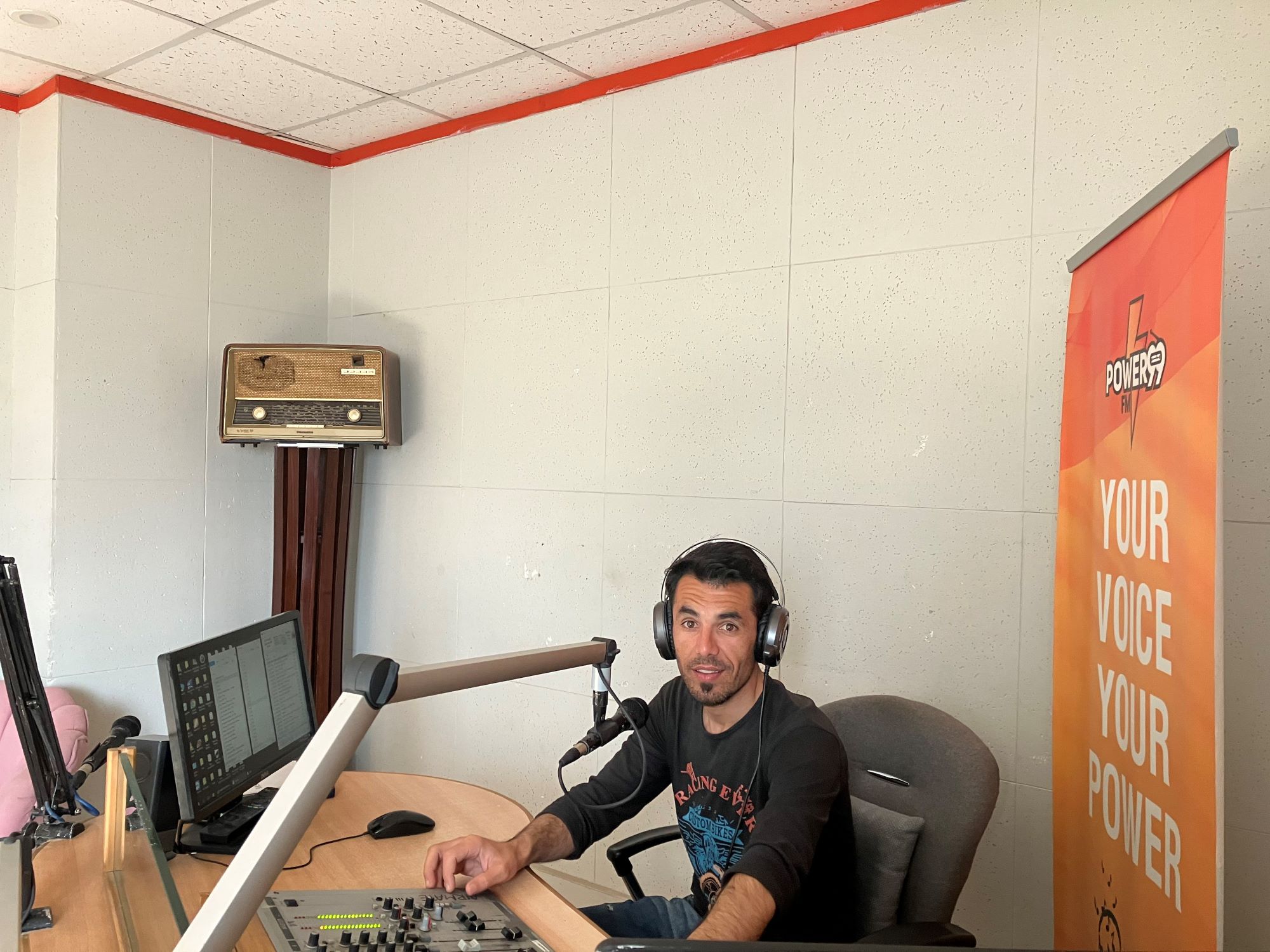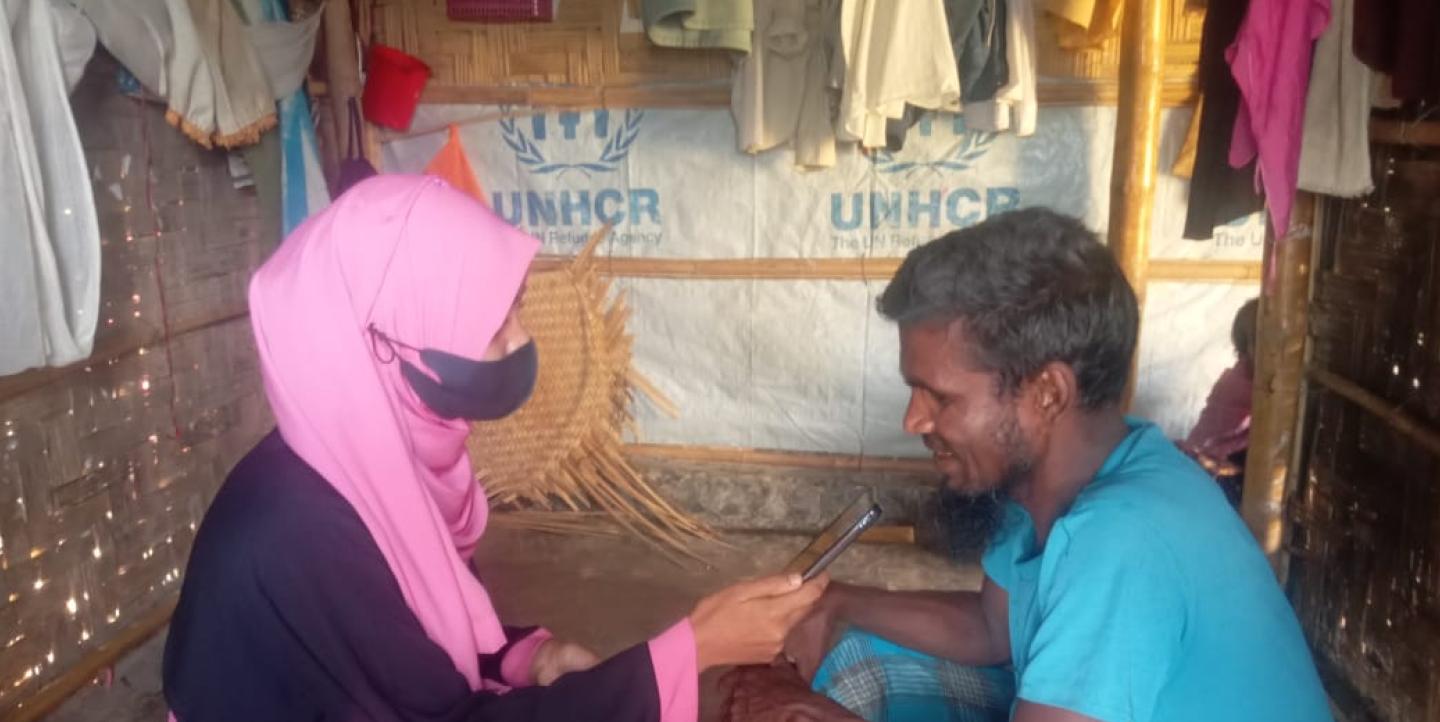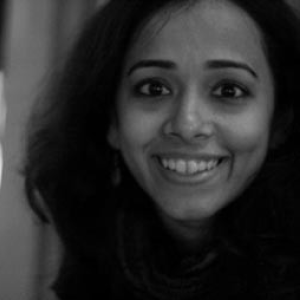When a massive fire broke out in a Rohingya refugee camp in Cox’s Bazar, Bangladesh, in early March, Voice of Palong (VoP) didn’t have to send in a team from far. Already based out of the Kutupalong refugee camp, the VoP team reported from the ground on the disaster and shared its footage with Bangladeshi news channels.
The weekly community radio show, which broadcasts from what is the world’s largest refugee camp of approximately 1 million people, is jointly produced in Rohingya language by Rohingya refugees and the Bangladeshi host community, with support from DW Akademie and local partner Young Power in Social Action (YPSA).
Awaz-e-Dosti, a radio program broadcasted by Afghan refugees in Pakistan, is also a joint initiative run by refugees and a host community. Produced in Persian, Pashto and Dari, it has found an audience in Afghanistan, Pakistan and beyond, according to Fakhira Najib, technical director at the Power99 Foundation, which helped launch the program in collaboration with DW Akademie.
These media initiatives are disrupting traditional news media hierarchies, and enabling refugee communities to control their own narratives.
Telling one’s own story
The Power99 Foundation and DW Akademie launched Awaz-e-Dosti after conducting an internal study that found that coverage of Afghan refugees in Pakistani media was lacking.
“This could be because of difficulties in access for mainstream media as they require permission to work in the refugee camps,” said Najib. “We identified people who were interested in radio, and helped in their capacity building. They are the best to identify sources and tell their own stories. The programs help to take news from within the camps to the outside world.”
One of the hosts of Awaz-e-Dosti, 25-year-old Bilal Danish, agreed: “I want to serve my community through journalism.”
Danish is an Afghan refugee whose family moved to Pakistan two generations ago during the Soviet invasion of Afghanistan. One of his stories, on a cancer patient in the Haripur refugee camp, inspired people to offer their help. Danish has also reported on trafficking among Afghan refugees and climate displacement, coverage he hopes larger Afghan media like TOLOnews and Pajhwok Afghan News will pick up.
VoP community reporter Mizana Begum, an 18-year-old Rohingya refugee, fled Myanmar with family in 2017 following the military campaign against Rohingyas. She is most proud of her reporting on small refugee-led enterprises, which she said encouraged her young neighbor to start a business to fend for himself. She was also able to cover the Cox’s Bazar fire, amplifying the stories of those affected by the disaster.
“Our uniqueness is that [VoP] is for, by and from the community,” said Shihab Jishan, YPSA project manager for VoP. “The radio program serves the Rohingya and the Bangladeshi host communities. This is the focus.”

Constructive reporting
VoP and Awaz-e-Dosti both prioritize constructive, solutions-based journalism. “Our stories build bridges between the host and refugee communities. Our work tries to reduce the possibility of conflict,” said Jishan. “We had done [a story] on the common love for football during the World Cup. A story we did on the water crisis in the camp led to NGOs coming forward with solutions.”
Another VoP community reporter, 22-year-old Jahid Hossain, reported on the Myanmar Curriculum Pilot, an education program based on the country’s national curriculum. A Rohingya refugee, Hossain had trained as a hafiz before fleeing Myanmar in 2017. He now works in radio at the refugee camp.
Similarly, a report by Awaz-e-Dosti on the lack of classes for older students in the local school inspired the community to renovate an old room and bring on a teacher so that Afghan refugee children – especially girls – could continue their education. “We focus on stories of hope, resilience, social cohesion, and not on creating sensationalism,” said Najib.

Building capacity
VoP and Awaz-e-Dosti have helped their reporters build important career skills. “Before joining VoP, I had a negative view about television and radio, coming from a conservative background,” said Hossain. “After working here, I can see how the right information can even save lives like in the case of reports on vaccination. It changed my life.”
Danish said he is happy to have received training, including in audio and video editing, adding he had also learned how to incorporate constructive journalism in his reporting.
Begum, too, has grown professionally in her seven months at VoP. “I used to be shy but now I have learnt many new things – to do interviews, vox pops and more,” she said. “It has sharpened my communication skills. I have also learned how to deal with the social stigma surrounding women working outside their homes in the Rohingya community.”
Sustainability challenges
With Awaz-e-Dosti, the Power99 Foundation wanted to create a media hub to help reporters become reliable sources of information for both domestic and international media outlets seeking coverage from refugee camps.
It’s not enough, however, to just train refugees to become journalists – they need pathways to be able to support themselves and sustain their work.
In Pakistan, refugee staff aren’t allowed to work as full-time employees because of their refugee status. They can only volunteer, explained Najib. In Bangladesh, Rohingya refugees lack legal status. This prevents them from being employed, too, and restricts movement and access to education and healthcare.
Refugee-led media outlets will need to grapple with these challenges moving forward.
Main photo credit: Voice of Palong.


